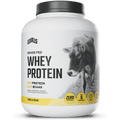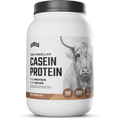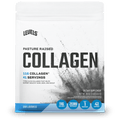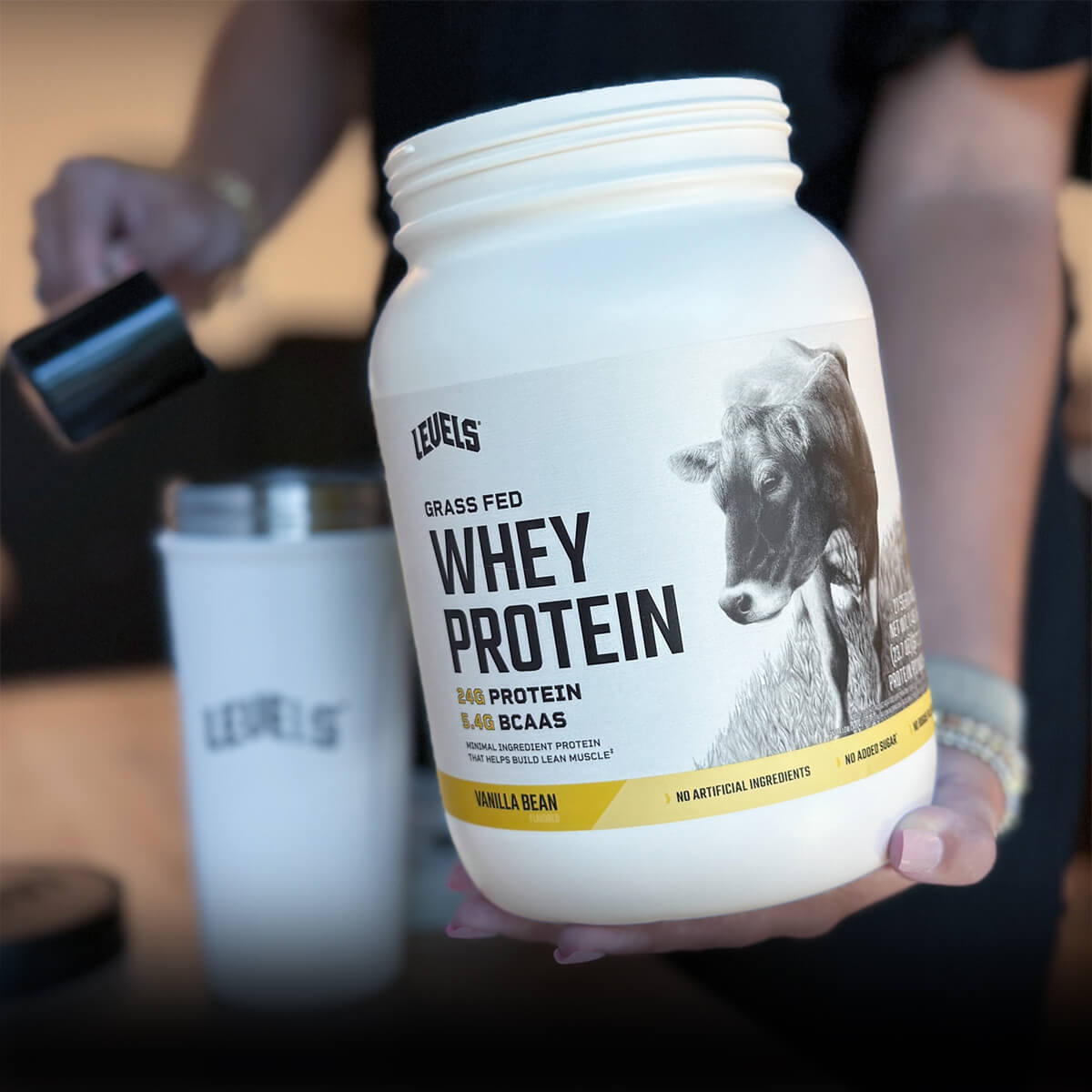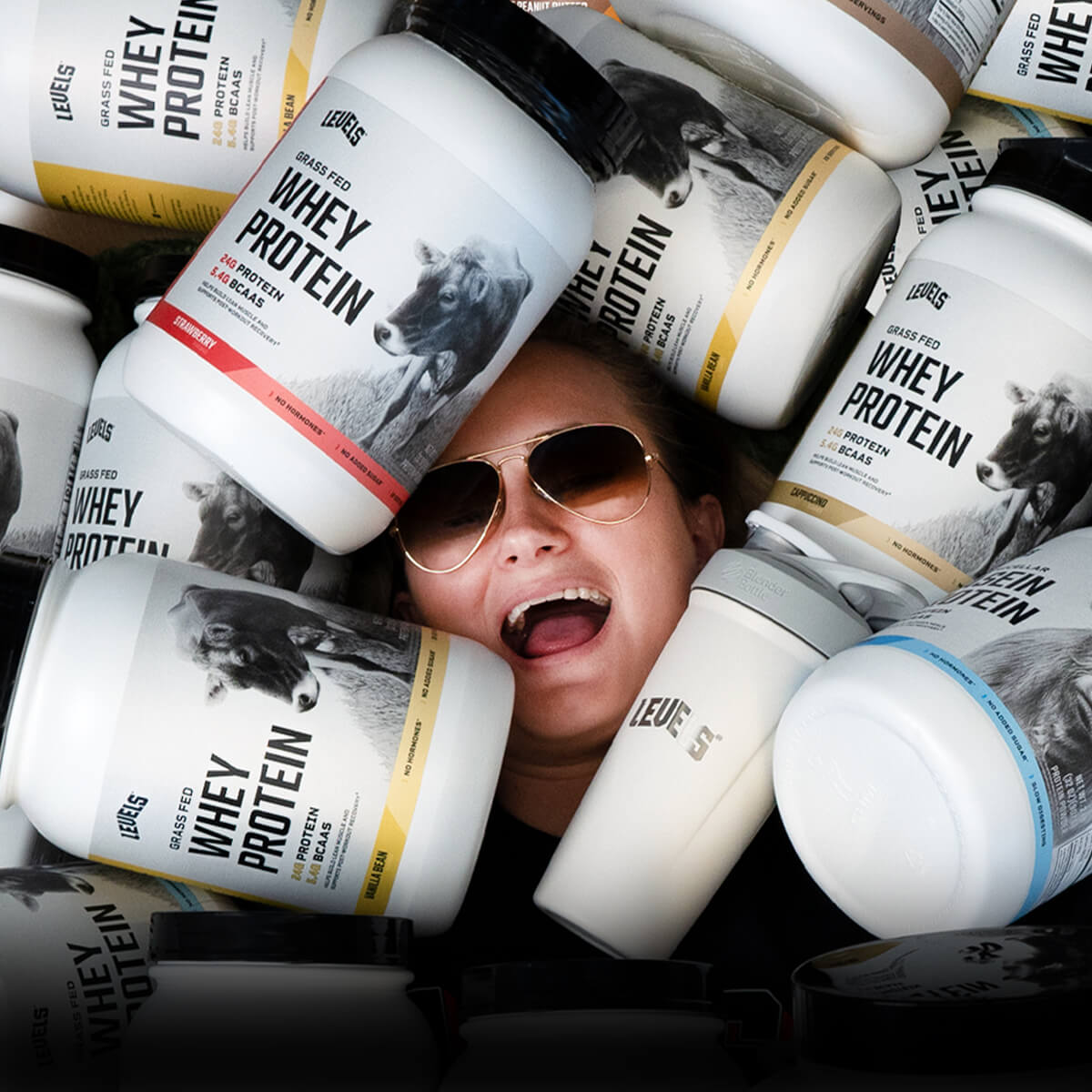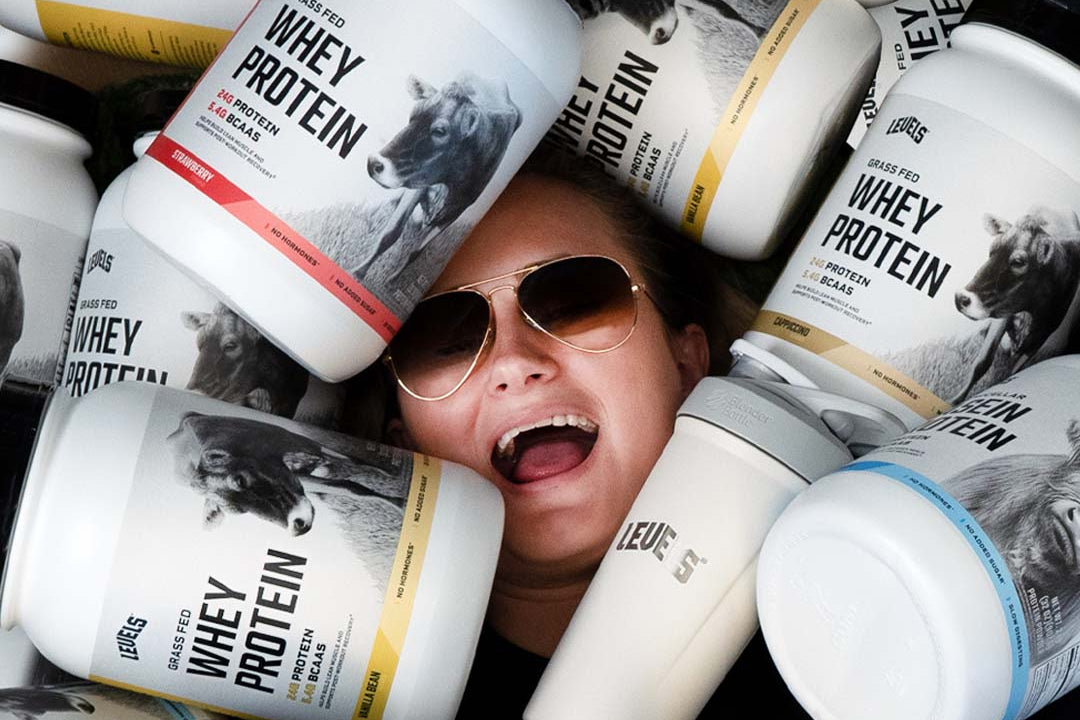Everyone knows that protein is a foundational building block for your body but it’s not always easy to get the daily amount of protein that your diet needs. Whether you’re a weightlifter or a casual gym-goer, whey protein is a great way to supplement your daily nutrition. But not all whey protein is created equal.
There are a few determining factors in the quality of whey protein: nutrition, environmental and animal welfare, and processing.
Whey Protein From Grass Fed Cows
In the same way that grass-fed and pasture-raised meats are more nutritious, grass-fed whey protein has many benefits over conventional whey protein. Conventionally raised dairy cows have diets that consist mostly of grain in order to quickly fatten them up for milking. These cows are often unhealthy, move less and have no grazing time during the day. They can live in unsanitary and inhumane conditions and are given antibiotics to reduce infection. Grass fed cows, on the other hand, are allowed to forage and graze in pastures for their own food. Eating only grass since they were weaned from their mother’s milk, grass-fed cows have been raised on the diet nature intended.
At Levels, we know the importance of quality and maintaining the purity of our whey protein.
Nutrition in Grass-Fed Whey Protein
Because of the varying living conditions and diet of dairy cows, there are nutritional differences between grass fed whey protein and conventional whey protein. The main nutritional difference between grass fed whey and conventional whey is in the fatty acid composition. Grass fed whey is high in anti-inflammatory omega-3 fatty acids. As opposed to more unhealthy omega-6 fatty acids, omega-3’s are less prevalent in your food and are often taken as a supplement for their nutritional value. Dairy from grass fed cows has been measured to be up to 5 times higher in omega-3 fatty acids than compared to conventional dairy.
In addition to these fatty acids, grass-fed whey is also much higher in CLA, a nutrient shown to increase fat metabolism.* CLA not only increases your fat metabolism, but it has also been shown to improve your strength and endurance and lower the risk of heart disease.* Research has also shown that milk from grass-fed whey is rich in B vitamins, vitamin E, calcium, magnesium, and potassium. It is a complete protein, including all nine essential amino acids as well as a higher concentration of BCAA’s. With a higher biological value, grass-fed whey provides not only an impressive amount of protein but a well-rounded amount of healthy fats, vitamins, and nutrients to boost weight loss, build muscle mass, and increase strength and endurance.*
Environmental Impacts and Cow Welfare
Unfortunately, today’s farming practices do not take into account the welfare of animals or the impact that this type of farming has on the environment. What does the diet of a conventional feedlot cow consist of? Grains, hay, corn stalks, cottonseed, and many other unnatural additives that cows would never eat in nature. Cows at feedlots often live in extremely unsanitary and inhumane conditions. These living conditions yield dairy that has less biological value and lack the essential fatty acids and nutrient profile that grass fed whey provides.
In contrast to conventional farming, grass fed farming practices raise healthier, happier animals that are able to roam and graze freely for life. They are given extra space to move around, reducing the level of stress on the animals and preventing the spread of disease. In addition to the welfare of animals, grass fed whey protein has a positive impact on the environment as well. A natural diet of grass produces less methane in the environment so there are lower greenhouse gases emitted from grass fed cows. By allowing cows to eat where they pasture, it eliminates the need to produce and transport hundreds of tons of feed grain, therefore reducing emissions. In addition, the sustainable way that grass fed dairy is raised has some amazing benefits for the soil as well: no herbicide and pesticide use, less soil erosion, and greater natural diversity.
Processing: Grass Fed vs. Regular Whey Protein
Diet and living conditions aren’t the only reasons that grass fed whey is superior to conventional whey. While not widely spoken about, the ways in which whey protein is treated is a very important part of its nutritional profile and the purity of the product that you are putting into your body. All whey protein goes through one of two types of treatment process methods to purify the product before you add a scoop into your protein shake: cold processing or heat treatment.
While heat treating whey protein removes impurities, it also destroys beneficial nutrients and amino acids, leaving you with a lower quality protein that doesn’t provide you with all the nutrients that you want out of your whey. Heat treating can also reintroduce heavy metals into the whey and create a more acidic PH balance. This process denatures the valuable amino acids due to the heat, making them less bioavailable for you.
On the other hand, cold processing purifies the whey but it is never exposed to high temperatures like heat-treated whey. When purifying the product during cold processing, lower temperatures are used, keeping the amino acids and nutritional profile available so you can reap the full benefits that whey has to offer.
The Checklist for Grass Fed Whey Protein:
When choosing a dietary protein, always go for quality over quantity. Now that you know the basics about grass-fed whey, use this checklist to make sure you are always getting the highest quality product possible:
- Third-party tested for heavy metals
- At least 20 grams of protein per serving
- Sourced from grass-fed dairy
- rBGH or rBST free
- Cold Processed
- Natural sweeteners and ingredients
- No imitation flavoring
